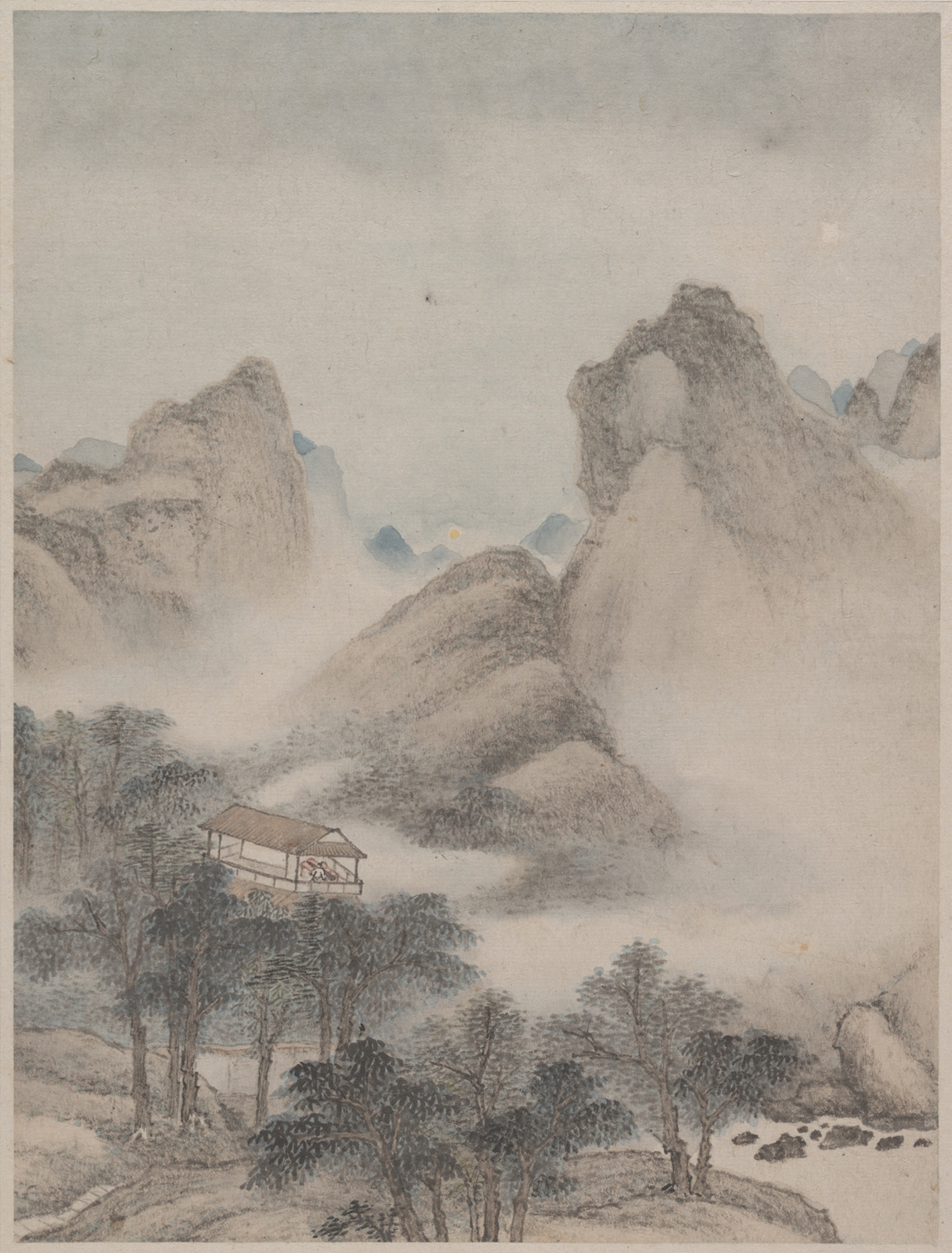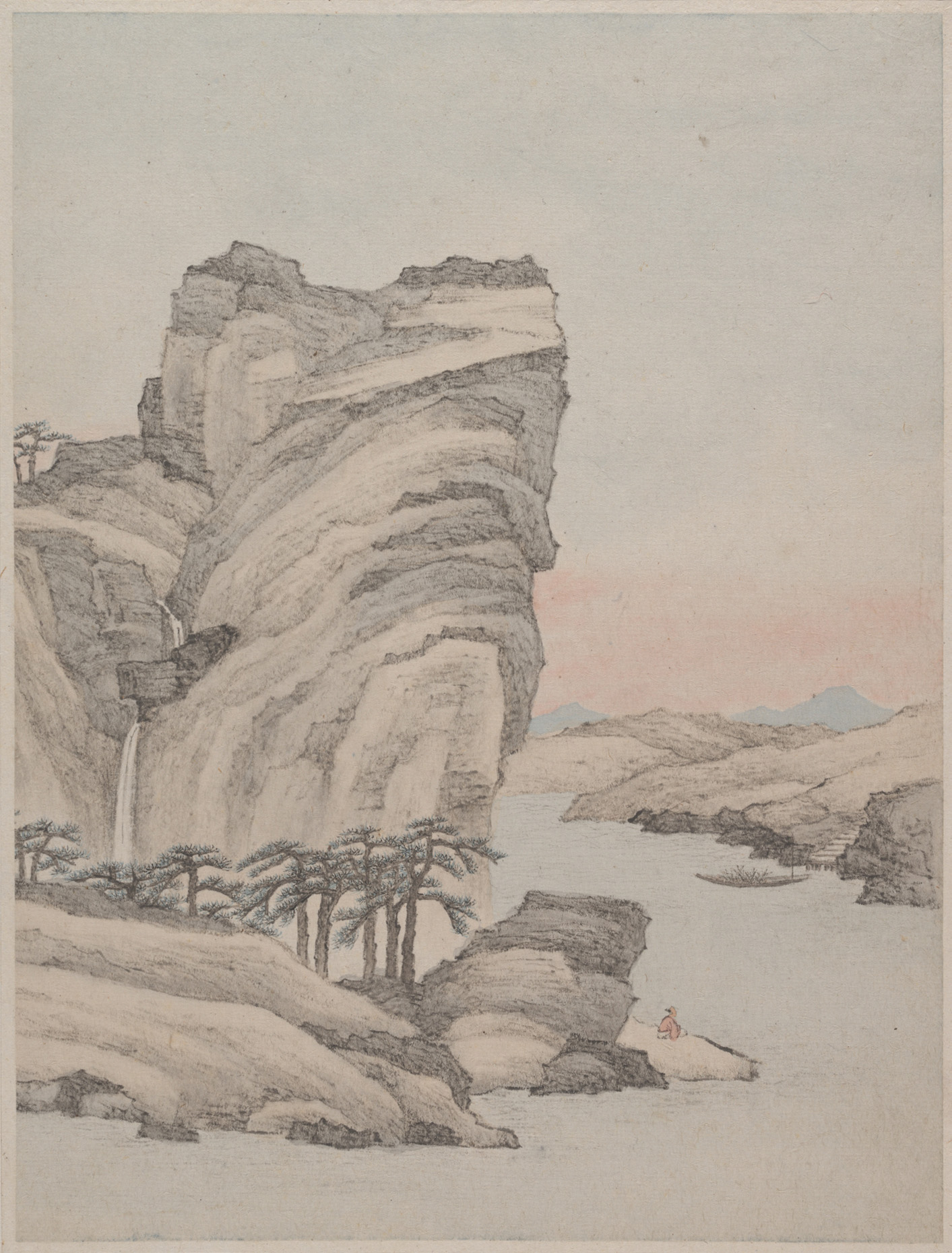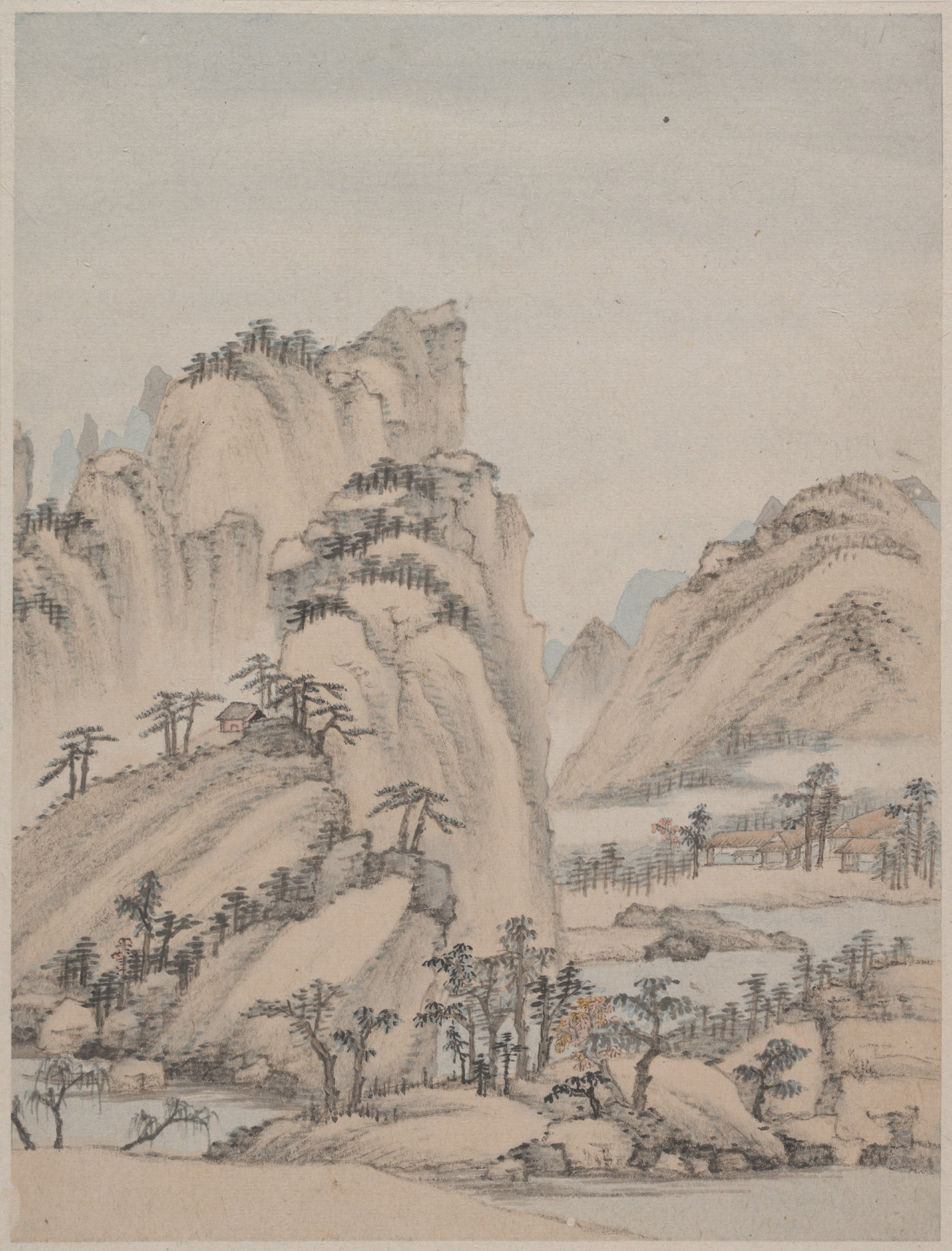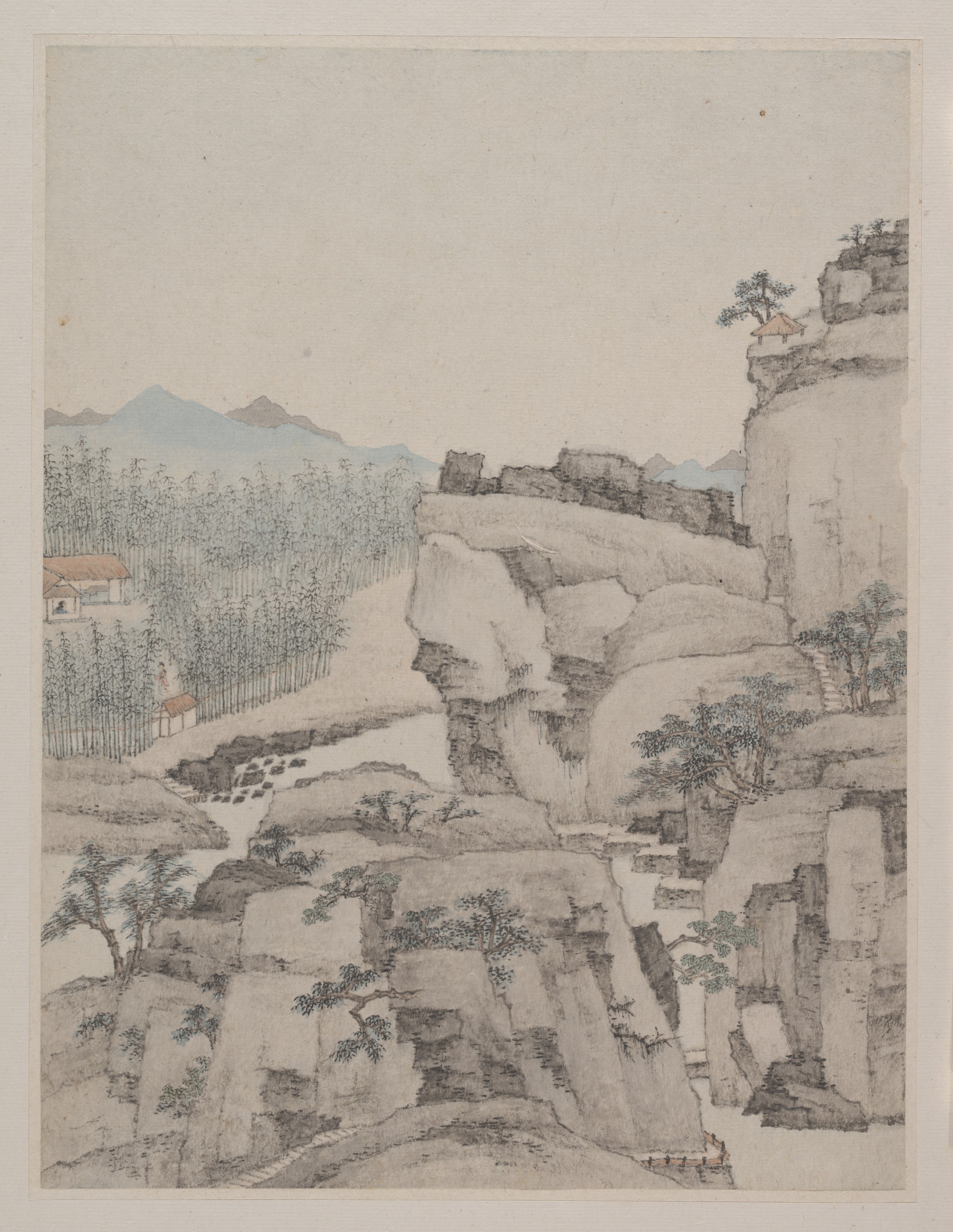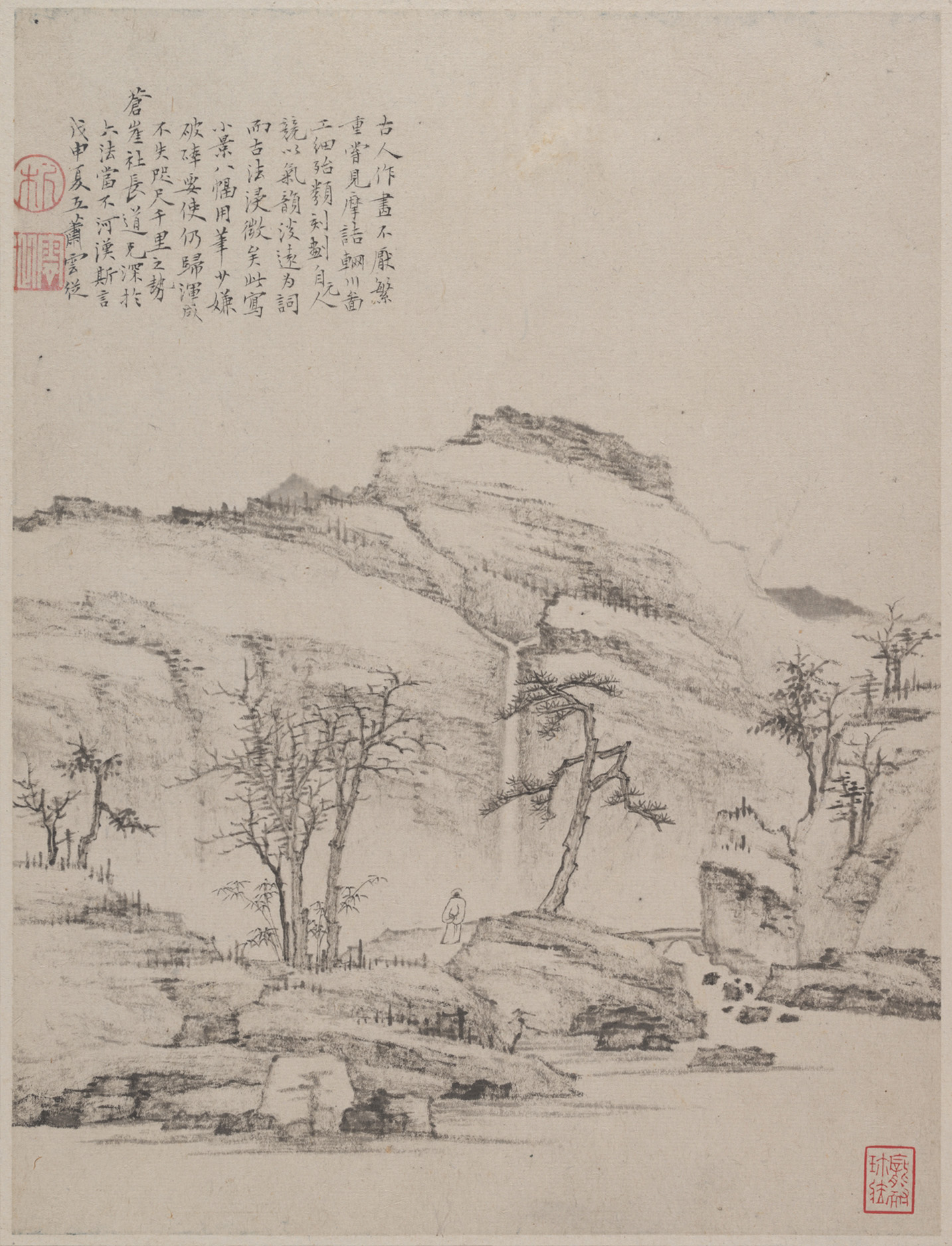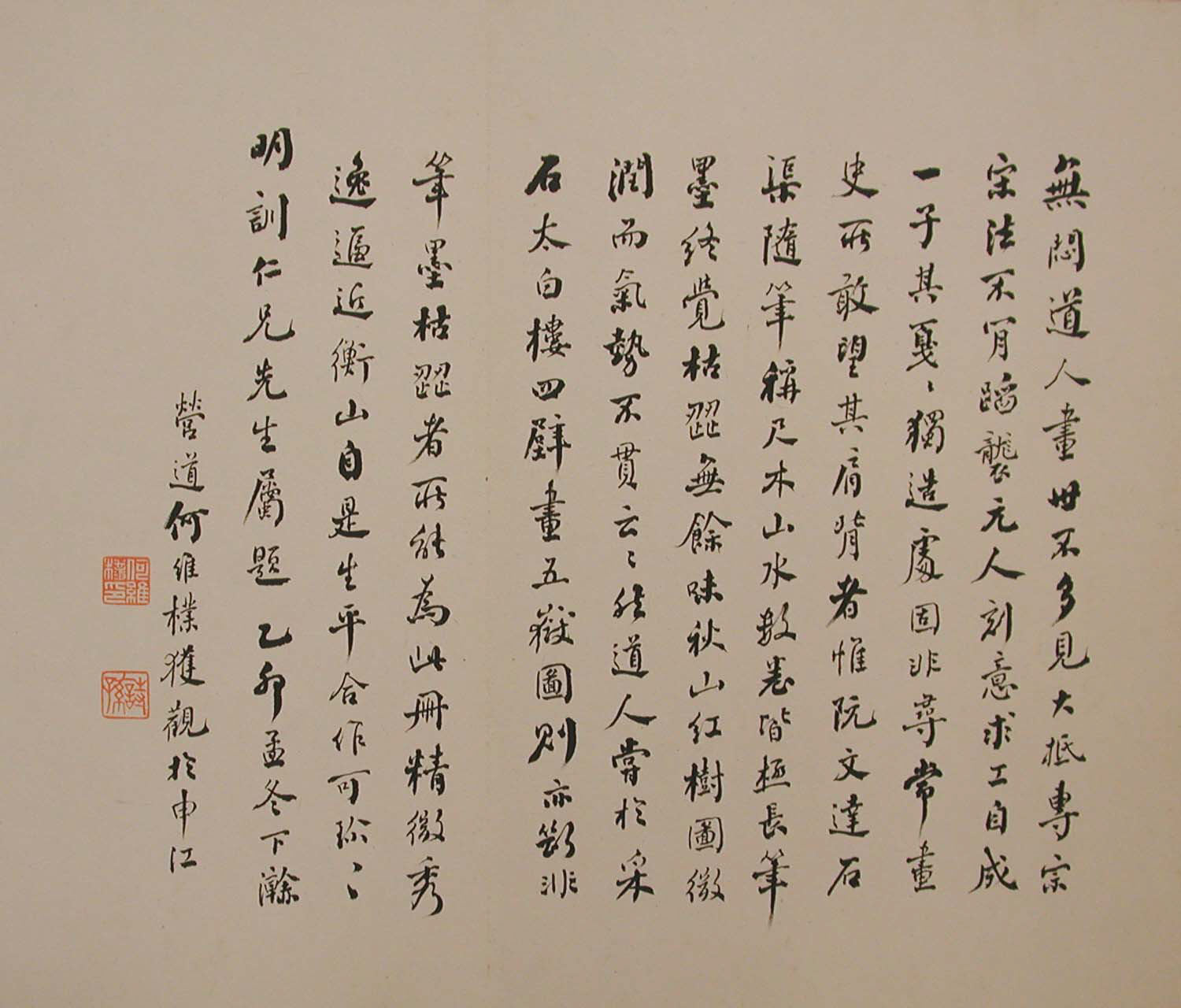Landscapes
Xiao Yuncong Chinese
Not on view
Xiao Yuncong was born into a gentry family in the town of Wuhu, Anhui Province, but for most of his career he resided in Nanjing, only fifty-five miles downriver. Between 1636 and 1642 Xiao and his two younger brothers prepared for the provincial-level civil-service examinations in Nanjing, where they also became political activists, joining the Fushe “Revival Society,” which sought to revive antique moral standards as a remedy for government factionalism and corruption. The fall of the Ming dynasty in 1644 ended Xiao’s government ambitions. Unwilling to serve under the Manchus, Xiao supported himself as a painter.
The present album, executed when Xiao was seventy-two, exemplifies his painterly abilities at their peak. Xiao expertly applied delicate colored washes and monochrome texturing to model landscape forms and suggest the veiling effects of atmosphere. Although Xiao’s images allude to antique models of the Song and Yuan dynasties, these gemlike miniatures recall nothing so much as the lyrical representations of landscape created by the contemporary professional masters of Nanjing.
Artist's inscription:
In his inscription, Xiao rejects the emphasis on abstract expressive brushwork championed by Yuan dynasty (1279–1368) scholar-artists in favor of the “old methods,” by which he presumably means the more descriptive techniques of the Song dynasty (960–1279) masters.
When the ancients made paintings, they were not afraid of being extremely meticulous. I once saw Mojie’s [Wang Wei, 699–759] Wangchuan Villa; it was so intricately done that it looked as if it had been engraved. From Yuan times on, artists have emphasized [the expressive qualities of] spirit resonance and plain sparseness, and the archaic methods were gradually eclipsed. The brushwork of these eight small scenes is slight and scattered. If it had been more coherent, then [these paintings] would not lack the impact of “a thousand miles [of scenery] in a few inches [of paper].”
Cangya, fellowship leader and colleague, has a profound grasp of the Six Methods [of painting] and will certainly understand these words.
In the fifth lunar month, the summer of the wushen year [June 9–July 8, 1668], XiaoYuncong
Due to rights restrictions, this image cannot be enlarged, viewed at full screen, or downloaded.
This artwork is meant to be viewed from right to left. Scroll left to view more.


